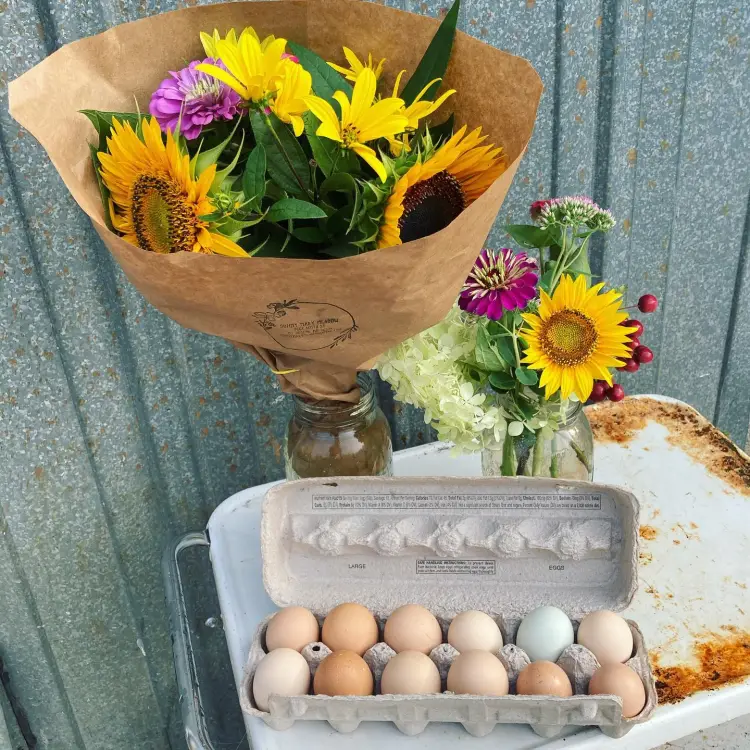In my first year growing flowers, I had never heard of succession planting. I planted 750 sunflowers all at once. They were ProCut variety and bloomed about 60 days after planting. I planted them all at my last frost date; therefore, they ALL bloomed in mid-July. That’s right; I had 750 sunflowers blooming over one week and NONE the rest of the season. Oops.
There are many “cut and come again” varieties of flowers that will produce more flowers the more you cut them, but they will get tired as the season goes on, and you will see a decrease in production. (Zinnias, I’m talking about you!) They can also get prone to disease; sometimes, a fresh plant is a good idea.
Enter: succession planting. Every two weeks, plant some more seeds. Now, I have a large enough customer base where I can sell about 500 sunflowers per week, so I grow about 4,000 ProCut sunflowers. To do this, every ten days or so, I plant anywhere between 500-750 sunflowers starting mid-May to early July. This helps avoid one massive harvest.
As I run out of space, I replace them with other flowers. For example, my Stock plants are done blooming in early June – BOOM, there are 250 ready-made holes for more Zinnias. I also harvest my first batch of 1,000 sunflowers in late June, and I just cut the branches off with a pole saw close to the bottom and pop another seed in the same hole.
I also have some flowers that get terrible germination rates. For some reason, only about half of my nigella germinated. I decided to pop purple basil in the empty holes. It doesn’t look the prettiest in the garden, but I care about saving space. Remember: a cut flower garden isn’t necessarily for looks. You’re growing for production. Most of the flowers need to be picked BEFORE their prime.
I also will plant dahlias or other flowers in the same bed where I dig up my tulips because they are treated as an annual in the cut flower world.




